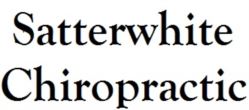Satterwhite Chiropractic Sees Disc Disease in Young People
“You’re young! You don’t have to worry about back pain.” Not true! New research shows that young and old alike must deal with disc degeneration. Most of us will personally have to deal with disc degeneration’s pain at some point in our lives…or help a loved one dealing with its back pain or neck pain effects. Satterwhite Chiropractic is here for young and old alike when Oxford disc degeneration interferes with your life.
DDD STARTS EARLIER THAN ONCE THOUGHT
It’s hard to believe, but it is reported in the medical literature. Disc degeneration begins in the late teens! A study of 18-20 year old healthy air force cadets uncovered that 77% had13 disc degeneration or disc herniation. (1) That is a new discovery! It’s been written elsewhere that disc degeneration begins at age 20. Now it is shown to rear its head in 18 year olds! In this project MRIs were done on all cadets. None of the cadets reported spine pain. On MRI, 30% showed at least one disc’s dehydrating, 13% disc narrowing, 49% disc bulging, 18% disc protruding, 8% disc extruding, 13% with spondylolisthesis, and less than 1% even had asymptomatic vertebral fractures. These findings in young, seemingly healthy people are similar to what would be predictable in adults. (1) It’s never too early to start paying attention to the spine! Satterwhite Chiropractic pays attention to everyone’s spinal issues via spinal manipulation, nutrition and exercise.
WHY?
Researchers (and parents) ask “why?” Why does lumbar spine disc degeneration or cervical spine disc degeneration begin so young? Genetics may play a role. 80% of patients in a recent study had mutations in their collagen-encoding genes. Collagen is important to disc and joint health. Back pain sufferers with a lumbar disc herniation had two variants in their gene encoding for aggrecan, a protein that the end plate depends on for load-bearing. Such a mutation affects the nucleus pulposus, annulus fibrosus and end plates. (2) Certainly, the whole story of why a disc degenerates is not fully defined yet. Satterwhite Chiropractic does have methods to restrain and relieve the pain of a Oxford degenerated disc.
INTERRUPTING DISC DEGENERATION, PROMOTING DISC REGENERATION
Researchers explained disc degeneration as a complex connection of mechanical, biochemical, and structural alterations at the cellular level, cells that are in an abnormal mechanical environment. Regeneration of such cells would demand very specific conditions and wouldn’t always be possible. However, traction of 2 to 6 weeks was found to be a responsive time for regeneration of a degenerated disc. The researchers suggest that this could interrupt the above described cascade of changes. (3) Satterwhite Chiropractic uses Cox® Technic to gently create a positive environment for the healing of degenerated discs by enhancing the area of the spinal canal by 28%, increasing the height of the disc by 17%, and decreasing intradiscal pressures to as low as -192mmHg in the low back and dropping pressures in the cervical spine by a mean pressure as much as 1265 mmHg. (4,5) Satterwhite Chiropractic enhances the Cox® Technic system of spinal pain management by adding spinal nutrition (particularly disc nutrition supplementation) and exercise to boost the relief and clinical outcome for Oxford back pain patients.
CONTACT Satterwhite Chiropractic
Listen to this PODCAST with Dr. Paxton Schofield on The Back Doctors’ Podcast with Dr. Michael Johnson who discussed his care of arthritis and degeneration with Cox® Technic.
Schedule your Oxford chiropractic appointment at Satterwhite Chiropractic for your spine’s health. You may not be as young as you think for back pain, and you are certainly not too young to look after your spine. A Oxford chiropractic treatment plan of spinal manipulation, nutrition and exercise can benefit all ages of back pain and neck pain sufferers struggling with disc degeneration.

